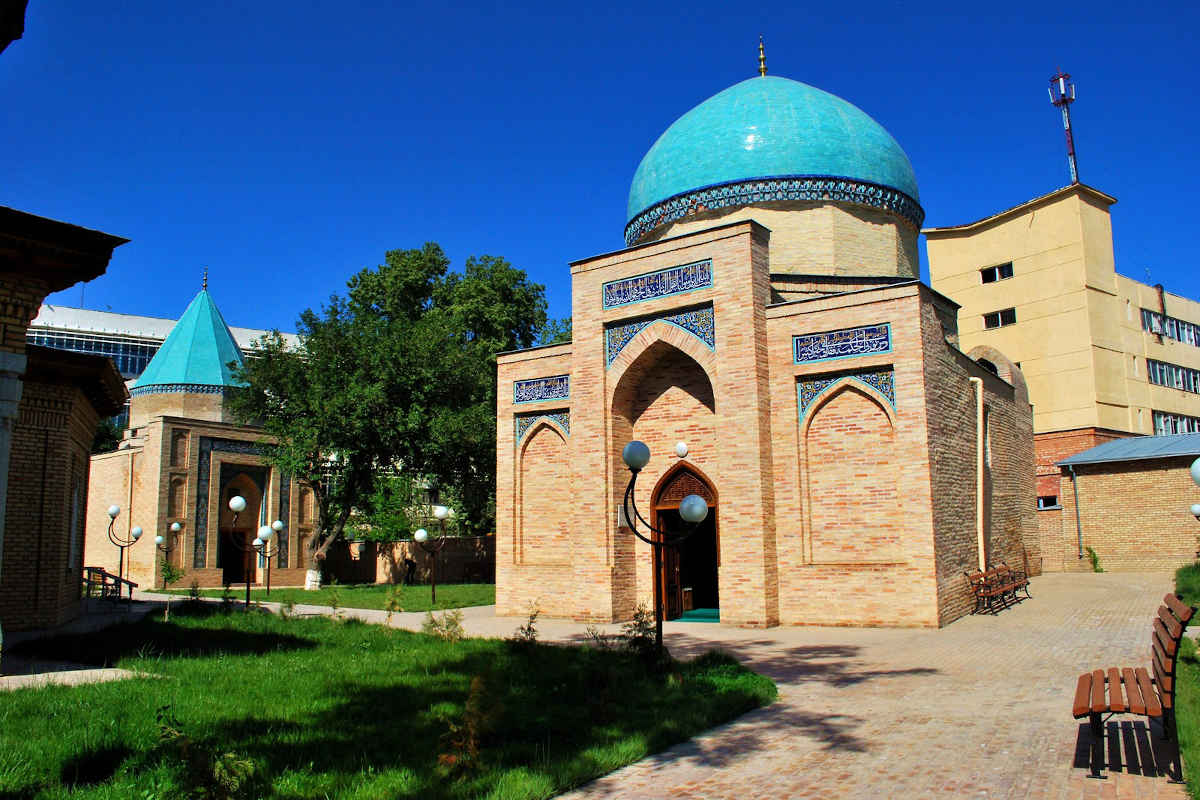Tashkent - Mausoleum Yunus-Khan
Not far from one of the most important sights of Tashkent, the Sheikhantahur Mausoleum, is the Yunus-Khan Mausoleum and not many people know what an amazing and extraordinary personality was the man in whose honour this structure was built in the XV century. An interesting fact is that Yunus-Khan the Mughal (1415-1485) was related to two important figures who left an indelible mark on the history of Central Asia. This respected and influential politician was a descendant of Genghis Khan, the Mongol conqueror who ruled Mawara’unnahr. The grandson of Yunus-Khan was Zahiriddin Babur, the direct descendant of Amir Temur, the military leader who spent many years of his life liberating Mawara’unnahr from Mongol rule. Moreover, one of Yunus-Khan’s relatives became the wife of another outstanding scion of the Timurid dynasty – Mirzo Ulugbek.

Yunus-Khan lost his father at the age of 13, which radically changed his further fate. The boy was sent to Herat and later to Yazd, where he spent his childhood under the tutelage of Sharafiddin al-Yazdi, the famous author of the “Book of Victories” (“Zafarnoma”) and court historian of Amir Temur. Under the sensitive guidance of his wise teacher, the young Yunus-Khan received the best education: he learned natural sciences, theology, literature, Arabic and Persian languages, played musical instruments and began to write poetry. After twenty years of “honourable exile” far from home, Yunus-Khan returned in 1456 and was appointed Khan of the Mongol-Ulus. After winning the support of the Temurids, he became governor of several parts of Fergana, and later, thanks to the influence of Sheikh Khodja Akhrar, he added Tashkent to his possessions. Success accompanied Yunus-Khan in all his endeavours, but in 1485 he was forced to relinquish the role of governor and transfer power to his sons because an illness – paralysis – had struck him. He spent two years before his death in a Dervish Sufi monastery near the tomb of Havendi at-Takhur, where he was buried. As a mark of respect, Yunus-Khan’s sons built a mausoleum.
The Yunus Khan Mausoleum is a unique building from the XV century. This one of the few monuments preserved in Tashkent from the Temurid period has practically no similar structures in Central Asia (except in Iran), as it is built in the form of a T-shaped khanaka – dwelling place of dervishes and pilgrims with residential cells – hujshras, housed in two floors. The Yunus Khan Mausoleum, a rather massive structure with a double dome and a portal, is striking for its size. The entrance is decorated with a high pointed arch. On the outside, the mausoleum is decorated in a strict ascetic style: the façade is decorated only with wooden grilles, calligraphic Arabic script and the ornament “girikh”. Carved wooden entrance door was transferred to the Yunus-Khan mausoleum in the 1930s from a demolished neighbourhood mosque. The interior of the mausoleum is decorated with stone columns. A mukarnas, a folded vault in the form of stalactites, can be seen under the vault. The hall of the mausoleum is opened on three sides by openings and the outer dome is built on a cylindrical drum. The domed ceiling of the main hall is in the form of intersecting arches and sails. The mausoleum of Yunus-Khan is full of mystery: an ancient oriental instrument, the chang, has been cleverly installed between the door panels, making the doors musical. Moreover, the tomb itself has not been found, its true location remains a mystery to this day.
Currently, the Mausoleum of Yunus-Khan is part of the complex of the Islamic University of Tashkent.
